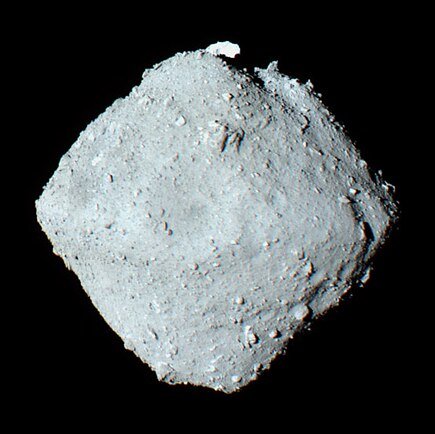The Mission and Arrival of Hayabusa 2
On June 27th, 2018, the Japanese spacecraft Hayabusa 2, launched by the Japan Aerospace Exploration Agency (JAXA), successfully arrived at the diamond-shaped asteroid Ryugu. This significant milestone marked the culmination of years of meticulous planning and technological innovation. The mission’s primary goal was to gather surface samples from Ryugu to provide insights into the early solar system and the formation of celestial bodies, thus addressing fundamental questions about our cosmic origins.
The journey to Ryugu was anything but straightforward. The mission required overcoming numerous challenges, from precise navigation in the vastness of space to developing robust instruments capable of withstanding harsh extraterrestrial environments. One of the key technological advancements was the ion propulsion system, which offered the necessary thrust for the spacecraft’s long-duration voyage while conserving fuel. This system exemplifies the advancements in propulsion technology that have made deep-space missions more feasible.
Another groundbreaking innovation was the deployment of small, autonomous rovers and landers designed to operate on Ryugu’s surface. These included the MINERVA-II rovers and the MASCOT lander, each equipped with an array of scientific instruments. Their successful deployment and operation provided invaluable data about the asteroid’s composition, topography, and thermal properties, bringing us closer to understanding the building blocks of our solar system.
The mission also faced significant navigational challenges. Ryugu’s irregular shape and weak gravitational field demanded precise calculations and adjustments during the spacecraft’s approach. The mission team at JAXA employed sophisticated algorithms and real-time data analysis to navigate these complexities, ensuring Hayabusa 2 arrived safely and remained in a stable orbit around the asteroid.
Among the critical milestones during the mission was the successful touchdown on Ryugu’s surface. This maneuver required extreme precision and control, as the spacecraft had to synchronize its descent with the asteroid’s rotation. The successful collection of surface samples from multiple locations on Ryugu was a testament to the mission’s meticulous planning and execution.
In summary, the arrival of Hayabusa 2 at asteroid Ryugu on June 27th, 2018, represented a monumental achievement in space exploration. The mission not only showcased the technological prowess and ingenuity of JAXA but also paved the way for future explorations of other celestial bodies, offering profound insights into the origins and evolution of our solar system.
Scientific Discoveries and Contributions to Space Exploration
On June 27th, 2018, the Hayabusa 2 spacecraft arrived at asteroid Ryugu, marking a pivotal moment in space exploration. This mission has yielded a wealth of scientific discoveries that have significantly advanced our understanding of the early solar system. The analysis of samples collected from Ryugu’s surface has provided unprecedented insights into the composition and structure of this primitive celestial body.
One of the key findings from the mission is the identification of organic compounds on Ryugu’s surface. These compounds, which include amino acids, are fundamental to the formation of life. Their presence on Ryugu suggests that the building blocks of life might be more common in the universe than previously thought, potentially delivered to Earth via asteroids and comets.
The structural analysis of Ryugu has revealed that it is a rubble-pile asteroid, composed of a loose collection of rocks and dust held together by gravity. This information is crucial for understanding the formation and evolution of asteroids, as well as for assessing the potential threat they may pose to Earth. Additionally, the data gathered by Hayabusa 2 has shed light on the thermal and physical properties of Ryugu, which are essential for designing future missions aimed at asteroid deflection or resource utilization.
Beyond the scientific discoveries, the Hayabusa 2 mission has made significant contributions to the field of space exploration through the development of new technologies and methodologies. The spacecraft’s successful touchdown and sample collection maneuvers demonstrated advanced autonomous navigation and precision landing capabilities. These innovations are invaluable for future missions, not only to asteroids but also to other celestial bodies such as Mars and its moons.
Furthermore, the mission has fostered international collaboration and provided a wealth of data for the global scientific community. The findings from Hayabusa 2 have been published in numerous academic papers, offering a comprehensive understanding of Ryugu and its implications for planetary science. For those interested in delving deeper into the mission’s discoveries, references to external sources and academic publications are available to provide additional insights and context.

